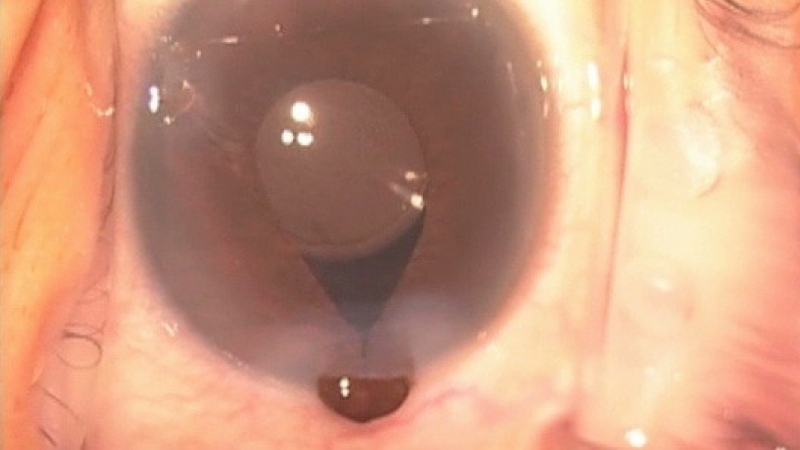Dealing with a prolapsing iris in a post-epinepherine world

The recent nationwide shortage of non-preserved epinepherine (used in the BSS bottle) has resulted in a rise in intraoperative floppy iris syndrome (IFIS) and iris prolapse during cataract surgery. Intraoperative devices such as viscoelastics, iris hooks, and Malyugin rings can help to manage the iris during phacoemulsification; but when it comes time to close the eye, none of these devices can be used. Irises prolapse due to Bernoulli's principle: rapid fluid flow over the iris creates a vacuum that pulls the iris out of the eye (just like rapid air flow over a wing pulls the airplane into the air). Stromal hydration, the very technique that seals the corneal wound, can create this high-flow state that potentiates iris prolapse. Therefore, to close and eye in the setting of a flaccid iris, avoid rapid fluid flow across the iris and out the wound. Using this knowledge, you can apply four simple techniques to manage the iris and to close the wound.
1. Stop irrigation and wait until the eye softens before removing the I/A tip. Reducing the IOP reduces the fluid flow rate over the iris and out the wound when the I/A tip is removed.
2. Release fluid from the paracentesis port. Like previous, by reduing the IOP, the pressure holding the iris in the wound dissipates, and the iris can settle back into the eye.
3. Massage the anterior lip of the wound. Pushing on the wound applies pressure to direct the iris back into the eye without trauma from surgical instruments.
4. Hydrate the stroma slowly and tangentially. By not filling the eye during early stages of stromal hydration (until the anterior chamber deepens), minimal fluid flow across the wound is created.
These techniques have worked great for me to manage a prolapsing iris. Please comment on additional techniques that you may have. Also, please share any alterantives to non-preserved epinepherine that could maintain iris tone and pupil dilation during cataract surgery.
